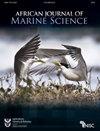Revisiting ‘A monograph on the Polychaeta of southern Africa’: establishing taxonomic research priorities in southern Africa
IF 1.4
4区 生物学
Q3 MARINE & FRESHWATER BIOLOGY
引用次数: 3
Abstract
Originally published in 1967, John H Day’s work ‘A monograph on the Polychaeta of southern Africa’ is still used widely to identify polychaetes. However, ongoing taxonomic revisions have revealed that several putative cosmopolitan or locally widespread taxa contained in the monograph are complexes of species with discrete distributions, globally and locally. This study therefore aimed to develop lists of taxa, including unresolved cosmopolitan and widespread indigenous species, that should be prioritised for revision to unlock their hidden diversity. A total of 609 species (56 families and 316 genera) were scored according to their time since description, global and local distribution, availability of genetic data and vouchers, alien status and economic importance, and then ranked. At least half the taxa reported locally are unresolved cosmopolitan complexes, and a quarter have wide local distributions, probably hiding cryptic diversity. Accordingly, we estimate that approximately 500 polychaete species are still undescribed in southern Africa. The four highest-scoring families (Syllidae, Nereididae, Spionidae and Eunicidae) comprise 25% of the species and 53–85% of the unresolved cosmopolitans, while multiple species are considered pests, used as bait or possible aliens. Prioritised genera (e.g. Eunice, Syllis, Nereis, Prionospio, Dipolydora) and species (e.g. Pseudonereis variegata) are usually members of prioritised families, but some species are not (e.g. Sabella cf. pavonina, Fimbriosthenelais zetlandica, Paleanotus chrysolepis, Gunnarea gaimardi, Capitella capitata). All taxon levels should therefore be considered to ensure that all species most in need of revision are identified. Ways to facilitate revisions are discussed.重温“南部非洲多毛虫专著”:确定南部非洲分类学研究的重点
约翰·H·戴(John H Day)的著作《非洲南部多毛体专著》(A monograph on polycheta of southern Africa)最初出版于1967年,至今仍被广泛用于识别多毛体。然而,正在进行的分类学修订表明,专著中包含的一些假定的世界性或局部分布的分类群是全球和局部离散分布的物种复合体。因此,本研究旨在制定分类群清单,包括尚未确定的世界性和广布的本土物种,这些分类群应该优先进行修订,以解锁其隐藏的多样性。根据描述时间、全球和本地分布、遗传数据和证据的可获得性、外来物种地位和经济重要性对609种(56科316属)进行评分,并进行排名。当地报告的分类群中至少有一半是未解决的世界性复合体,四分之一在当地分布广泛,可能隐藏着神秘的多样性。据此,我们估计在非洲南部仍有大约500种多毛类未被描述。得分最高的4个科(飞虱科、蠓科、刺蚊科和蠓科)占物种总数的25%,占未解决的世界蚊的53-85%,而多个物种被认为是害虫,被用作诱饵或可能的外来生物。优先属(如尤尼斯、西尼斯、奈尼斯、Prionospio、Dipolydora)和种(如Pseudonereis variegata)通常是优先科的成员,但有些种不是(如Sabella cff . pavonina、fibriosthenelais zetlandica、palanotus chrysolepis、Gunnarea gaimardi、Capitella capitata)。因此,应考虑所有分类单元水平,以确保所有最需要修订的物种都得到确认。讨论了促进修订的方法。
本文章由计算机程序翻译,如有差异,请以英文原文为准。
求助全文
约1分钟内获得全文
求助全文
来源期刊

African Journal of Marine Science
生物-海洋与淡水生物学
CiteScore
2.60
自引率
16.70%
发文量
17
审稿时长
6-12 weeks
期刊介绍:
The African (formerly South African) Journal of Marine Science provides an international forum for the publication of original scientific contributions or critical reviews, involving oceanic, shelf or estuarine waters, inclusive of oceanography, studies of organisms and their habitats, and aquaculture. Papers on the conservation and management of living resources, relevant social science and governance, or new techniques, are all welcomed, as are those that integrate different disciplines. Priority will be given to rigorous, question-driven research, rather than descriptive research. Contributions from African waters, including the Southern Ocean, are particularly encouraged, although not to the exclusion of those from elsewhere that have relevance to the African context. Submissions may take the form of a paper or a short communication. The journal aims to achieve a balanced representation of subject areas but also publishes proceedings of symposia in dedicated issues, as well as guest-edited suites on thematic topics in regular issues.
 求助内容:
求助内容: 应助结果提醒方式:
应助结果提醒方式:


